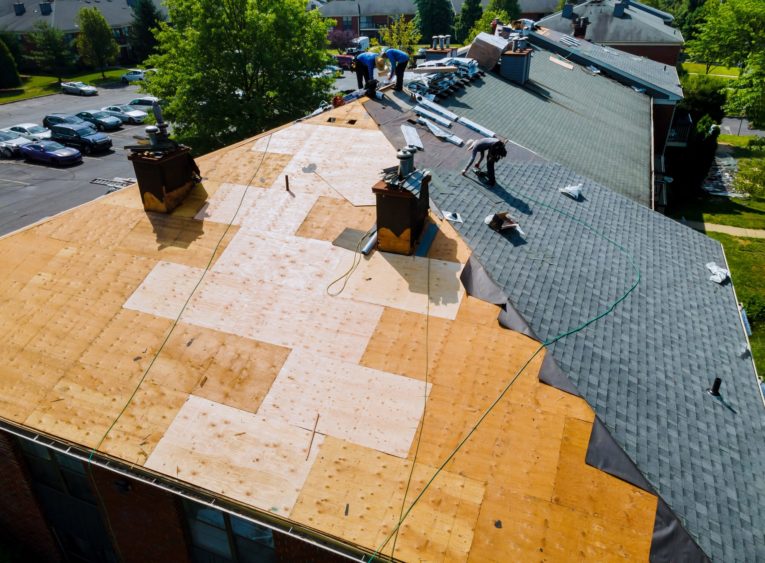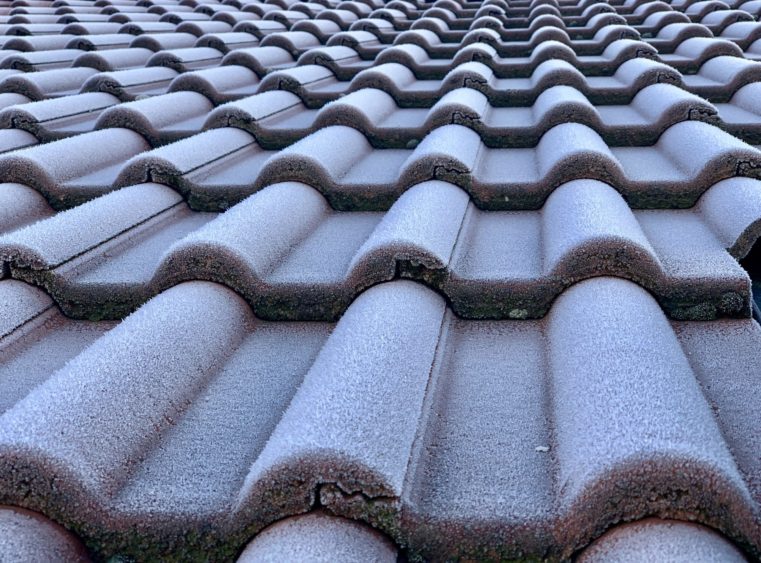Metal roofing is for homeowners and businesses that want an attractive roof that can regulate indoor temperature and protect your property for a few decades. But they aren’t all rainbows and sunshine; to keep them functioning and looking good while they do it, metal roofs require frequent (but minor) maintenance.
If you are looking to buy a metal roof or have one and want to learn more about it, we have collected the top pros and cons of metal roofing for you!

The Pros of Metal Roofing
Styles
When you think about a metal roof, an image of tin sheets may come to mind, but that is hardly the only look available today.
Metal roofs have come far in recent years with a wide variety of colors and designs that mimic shingles, slate, tile, and shake! Odds are, you have neighbors with metal roofs and never noticed.
Durability
Metal roofing is being made to last longer than ever! With new protective coatings, innovative brands like Galvalume® are much more resistant to corrosion and natural wear and tear.
A corrugated metal roof in Florida will last anywhere between 40 to 50 years. That’s right in between asphalt shingles (15 years) and clay tile (100 years). Depending on how old you are, a metal roof will last the rest of your life!
Energy efficiency
You don’t just save energy, you save money. With a metal roof, you can pay 20% less on your energy cost annually.
The modern cool paint technology that many manufacturers use today reflects up to 85% of heat from the sun. On an 80-degree day in the Tampa Bay Area, a metal roof will only heat up to about 90°F degrees while asphalt shingles will cook at 130°F!
Environmentally friendly
Metal is a natural resource that can be 100% recycled. In fact, some metal roof manufacturers use recycled materials for their roof panels.
If you care about the environment, then a metal roof is a great alternative to asphalt shingles. Toxins from asphalt run off of your roof every time it rains, polluting your property! However, when you have a metal roof, the rainwater remains clean for plants and animals alike.
The Cons of Metal Roofing
A metal roof can have many disadvantages and issues. We can’t cover them all. But we will go over the most common problems, especially the ones that all other issues lead to.
Rust
Metal roofs are made of painted aluminum or galvanized steel. Any abrasion, scratch, or cut in the surface of the paint will tear away the protective coating, exposing the pure metal to the elements. Brands like Galvalume® roofing can help to control the spread of rust, giving you more protection and time to repair.
If the wrong combination of materials is used, dissimilar metal corrosion will occur. Steel doesn’t play nice with most metals, including copper and aluminum. And they don’t even have to touch. If water runs off of one onto another, it can cause rust to form.
A metal roof can entirely fail if a rusting problem is not remedied. When you own one, you should schedule a roof checkup once or twice a year. Your trusted roofing contractor will look for damage and repair it to prevent further deterioration.
Poor installation
This is not the time to save money by finding the cheapest roofers in town. Inexperienced roofers struggle with metal roofing material, and their poor installation can lead to devastating water damage.
If the screws are under-driven or off-center, the fasteners are not well set and leave openings for water to get in. Sometimes rookie roofers will not completely finish the roof and forget to add all of the flashing. Another common mistake we see from other contractors is large gaps left in between panels.
The best defense against a bad installation job is research. Pick the roofing material you want and make sure the roofers you hire are approved by that manufacturer. When a manufacturer backs up a roofing company like Roofing Recovery, you know that they have been trained to install that product perfectly.
Scratching and scuffing
It’s difficult to avoid scratching and scuffing. Foot traffic is the #1 cause, but hail and debris caused by severe storms can also be a problem.
Roof abrasions can be manually filled in with a paint pen from the manufacturer of the metal roofing material. If you don’t fix them, it will leave these areas vulnerable to corrosion.
Metal Roofing Installation Near Me
They are worth the effort if you’re willing to make it. If you invest in a metal roof, you must be prepared to stay on top of damage. Schedule an annual maintenance checkup so that you never forget.
If you own property in West Palm Beach, Broward, or Dade, and want a metal roof installed, replaced, or repaired, contact Roofing Recovery for consultation. With over 3 decades of experience, we have mastered the art of roofing. Be rest assured that your metal roof will be perfectly serviced by experts in the field who take pride in their craftsmanship and care about your full satisfaction.




























